Art Detective
At 69, Painter Dennis Kardon’s Career Was at a Standstill. Then a Big Gallery Came Calling
How an old album cover sparked a fairytale-like reversal of fortune
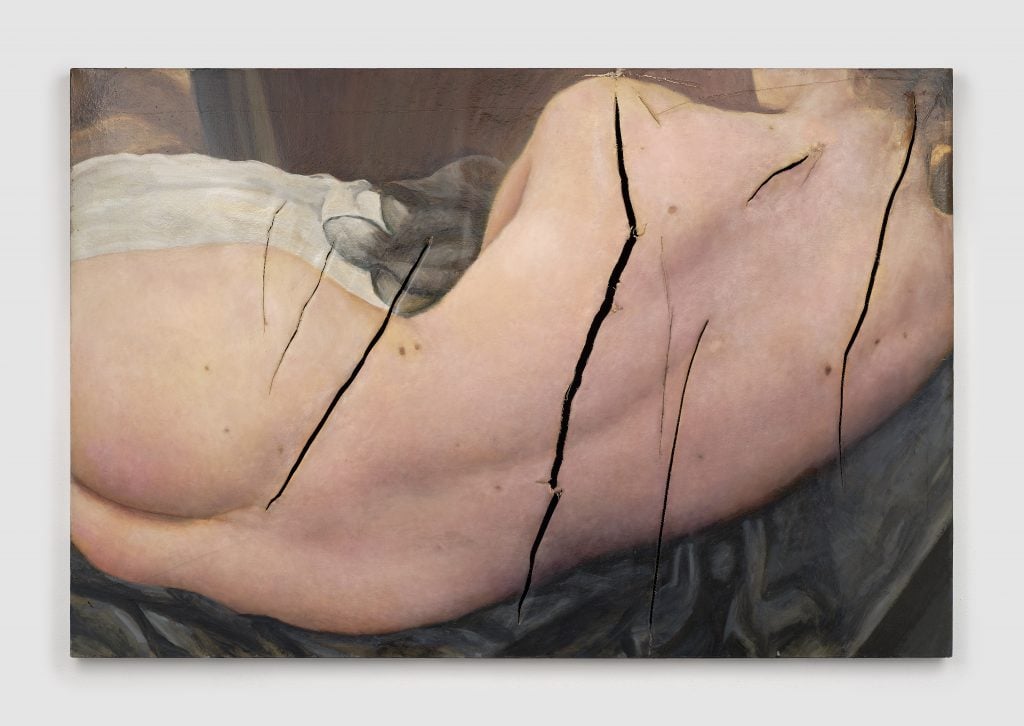
How an old album cover sparked a fairytale-like reversal of fortune

Katya Kazakina

It was May 2020, the start of the pandemic, and painter Dennis Kardon had absolutely no illusions about the state of his art career. He was 69. He had spent decades experimenting in his studio, writing art criticism, and teaching at the School of Visual Arts. He hadn’t had a solo show in Manhattan in years.
“I knew that for anything to happen to my career someone would have to fall in love with my work,” Kardon said in an interview earlier this month. “I hadn’t given up my hope. I thought that maybe a small gallery would give me a show.”
Then an unexpected email arrived. The sender purported to be a director from Massimo De Carlo, a well-regarded gallery based in Milan that currently has outposts in London, Paris, Hong Kong, Beijing, and Seoul. The email led to a two-hour studio visit over Zoom, followed, in short order, by the six words that artists dream of hearing: “We want to show your work.”
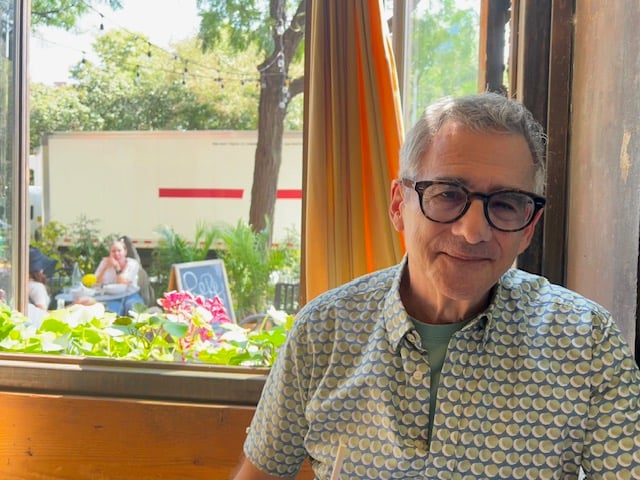
Painter Dennis Kardon earlier this month. Photo by Katya Kazakina
“At first, I thought it was a scam,” Kardon, 73, told me. “I don’t have a big career. How did Massimo find me?”
The answer to this question was just one remarkable part of an incredible turnaround in Kardon’s fortunes. Over the next three years, the heavyweight gallery sold five times more work by Kardon than he had since the mid-1980s. His new buyers included collectors in Asia and Europe as well as U.S. art patrons Beth Rudin DeWoody and Sara Shlesinger.
Even more significant: A younger generation of artists was discovering his deft, dense, and passionate paintings, with distorted figures and objects emerging out of abstract torrents. (It is almost the reverse of Cecily Brown’s process, which begins with an image only to dissolve into abstraction.) X-rated images hide in plain sight or are cheekily reflected in mirrors.
One fan, a 35-year-old artist Kevin Tobin convinced his New York gallery to let him curate a mini survey of Kardon’s painting, spanning almost four decades. Titled “Transgressions,” it recently opened at the Lubov gallery on the Lower East Side, with 14 deliciously provocative canvases on view through October 26.
“He’s really a top-tier artist who should be getting this kind of recognition,” Tobin said. “All my painter friends have been blown away by his work.”
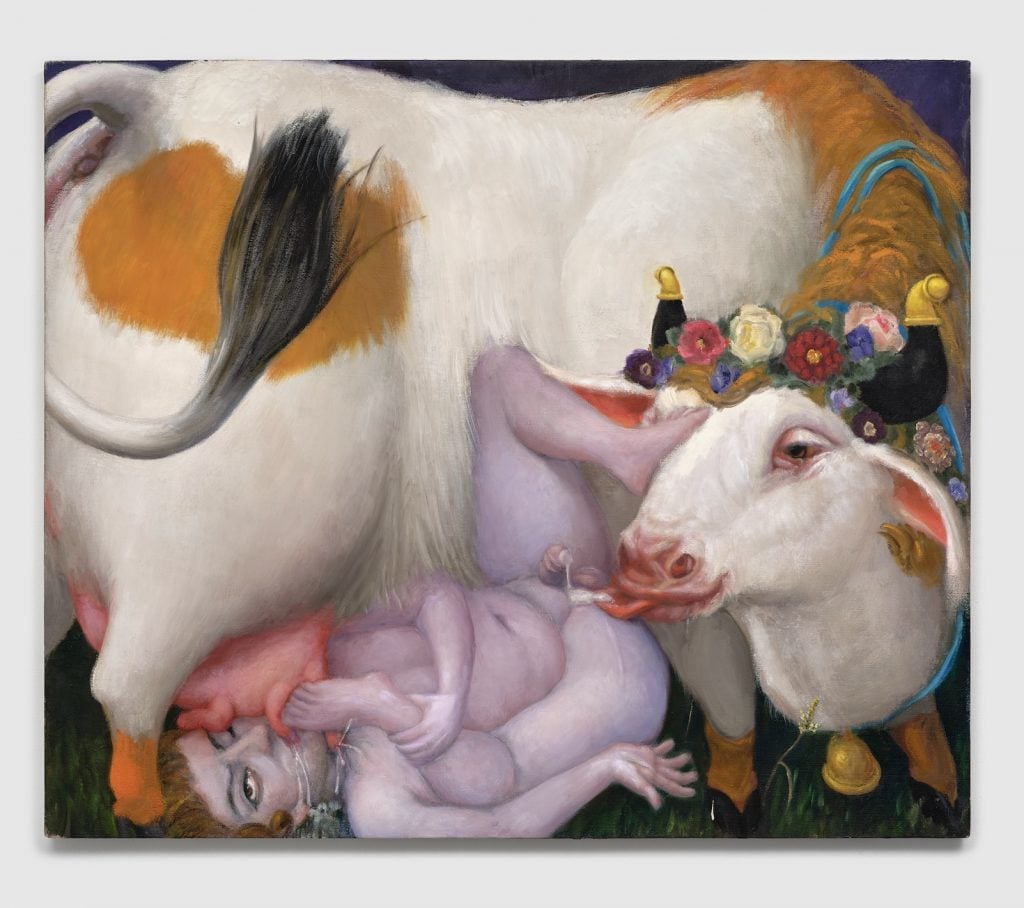
Dennis Kardon, Metempsychosis (2006). Courtesy: Lubov Gallery
The wildest painting, Metempsychosis (2006), was partly inspired by the Greek myth of the rape of Europa and partly by images of Krishna in Hindu art. Kardon told me that the art critic Jerry Saltz once described the scene of sucking and licking that involves a cow and a contorted man as “cowalingus.” (“Alas, it’s true!” Saltz confirmed by email.) For Kardon, the scene represented “the vision of total hedonistic joy and happiness,” he said.
The earliest painting is a 1989 reclining nude, based on Velázquez’s 1647–51 Toilet of Venus (Rokeby Venus). The woman’s back is slashed through in several spots, as it was by a suffragette at the National Gallery in London in 1914. Three small canvases from 1990 present extreme body close-ups, with every hair wisp, pimple, and chipped nail perfectly rendered. Prices range from $9,000 to $40,000, and two have already sold, according to the gallery.
“People are fascinated by his technique and subject matter, the way he moves paint on the canvas,” Lubov’s owner, Francisco Correa Cordero, said. “Dennis is very uninhibited. He goes all the way.”
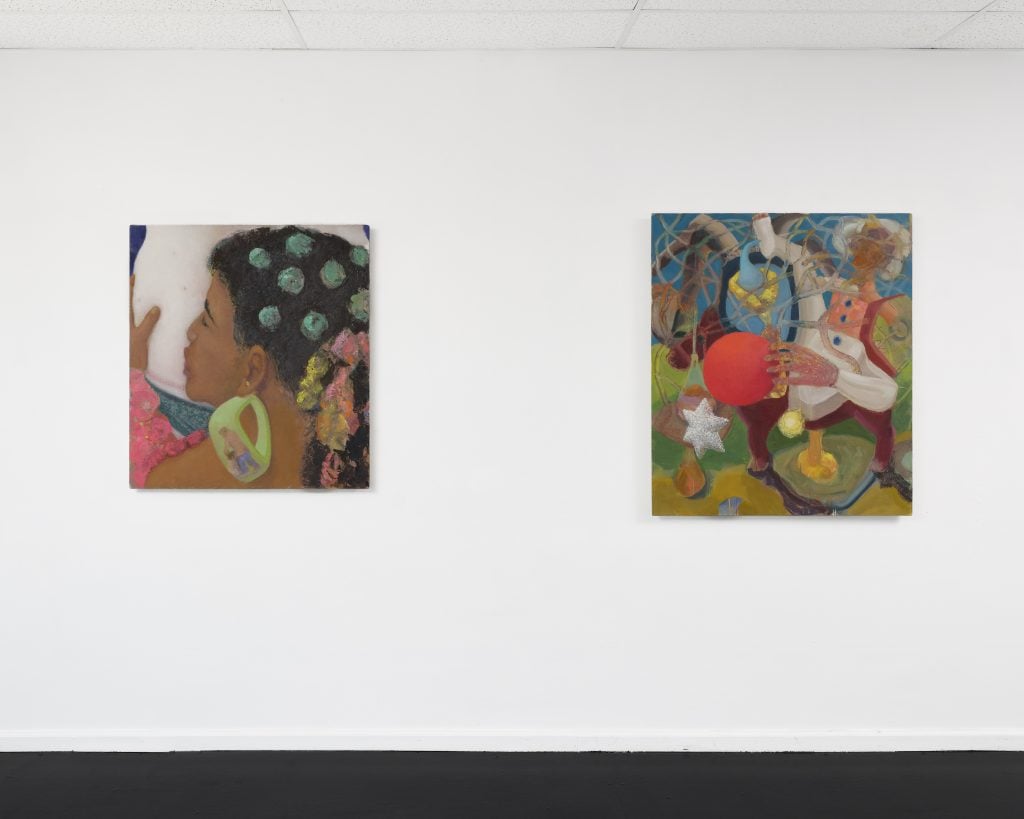
Installation view of Dennis Kardon’s “Transgressions” exhibition at Lubov Gallery. Courtesy: Lubov Gallery
The story lays bare just how dramatically one stroke of luck can shape an artist’s career. That is a sobering lesson for a younger generation of artists lamenting a deflated market after a pandemic-fueled boom. Some may be entering years in the wilderness, like those Kardon endured. His takeaway: keep making work, regardless of whether the market’s spotlight is on you or not.
And despite his thrilling recent success, he is facing headwinds, too. After a rush of sales at prices ranging from $10,000 to $25,000 from 2020 to 2023, Kardon didn’t sell anything for a year, even as his works appeared at international fairs such as Frieze New York, he said. His auction market is virtually nonexistent, with just three works listed on the Artnet Price Database; only one sold, for $1,250, in November 2009.
“I am trying not to get attached to the outcomes,” Kardon said. “When I turned 60, I decided: I have my studio; I have a nice family. I don’t need to be famous. I don’t give a fuck any more. I know what I want. I know who I am. I am not trying to be someone else. Whatever I do is me. I’ll let someone else sort it out.”
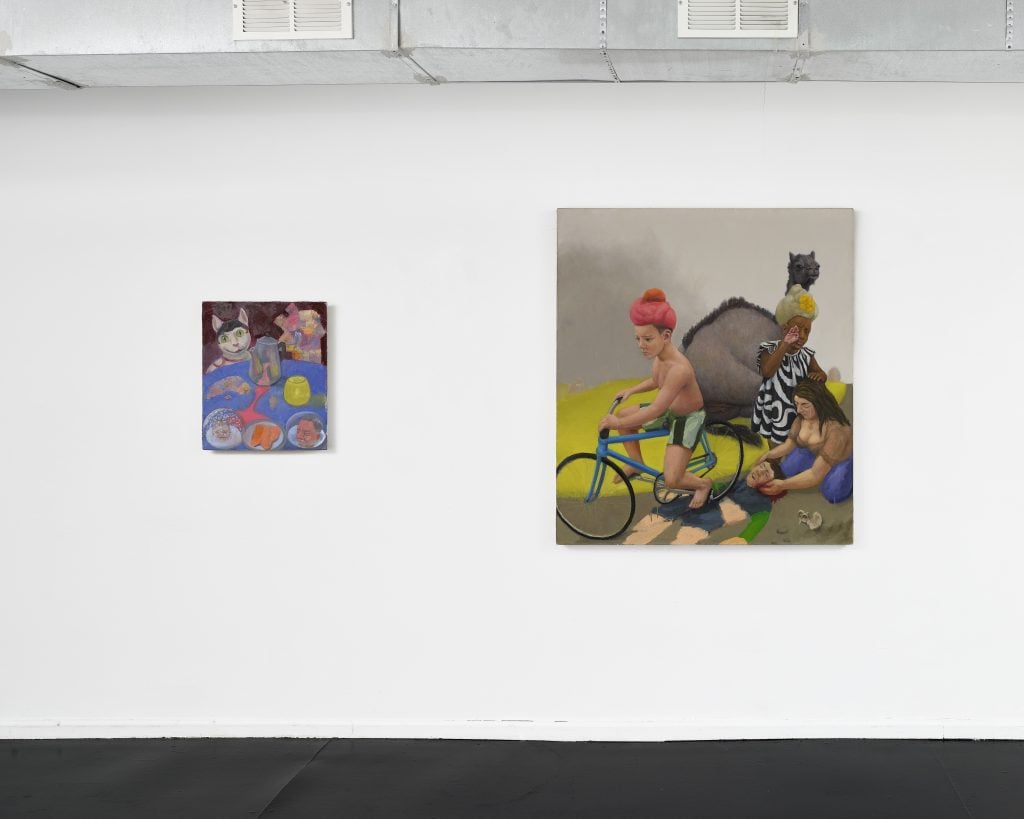
Installation of Dennis Kardon’s solo show, “Trangressions,” at Lubov Gallery. Courtesy: Lubov Gallery
The artist would be the first to say that it took him a long time to flower.
As an undergrad at Yale, Kardon initially planned to do pre-med, but he switched to art after taking a drawing course. At Yale’s summer program in Norfolk, Conn., he studied with Chuck Close, Al Held, and Philip Guston. Held helped Kardon get into the Whitney Museum Independent Study Program, where he met emerging talents like the future acclaimed choreographer Trisha Brown and artists Walter Robinson and Robin Winters.
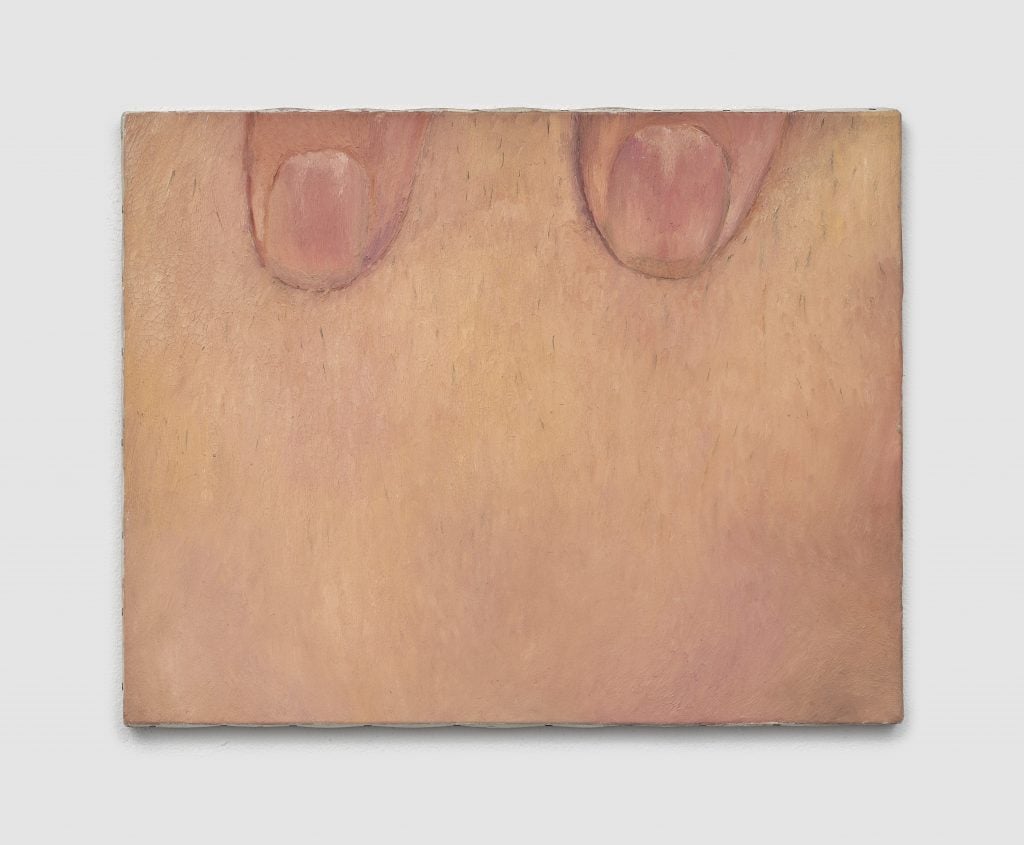
Dennis Kardon, 4/27/90 (1990). Courtesy: Lubov Gallery
While some have criticized him for being inconsistent, Kardon said, he loves the unpredictability of his creative process. “Starting a painting is like leaping into chaos,” he said. “Once I leap, I am fine.”
Massimo De Carlo appreciated this spontaneity as well, Kardon recalled. That may have something to do with the dealer’s background as a jazz lover—which is how he entered the picture.
In the 1980s, before De Carlo opened his gallery, he organized concerts for American jazz musicians in Italy. One of those musicians was Anthony Davis, who would go on to win a Pulitzer Prize in music in 2020. The news, announced early in the pandemic, led De Carlo to pull out his Davis records, and the cover of the 1980 album Lady of the Mirrors caught his eye. It features a piece that Kardon made with cut-up black and white paper that plays with positive and negative space. (Davis and Kardon knew each other at Yale. They graduated in 1973, moved to New York, and became friends.)
Not having heard of Kardon, De Carlo looked him up, found his website, liked what he saw, and asked one of his gallery’s directors to reach out. The rest is history. The artist had a solo show with the gallery in London in 2021. In November, it will present a work by Kardon in its “Pièce Unique” window space in Paris.
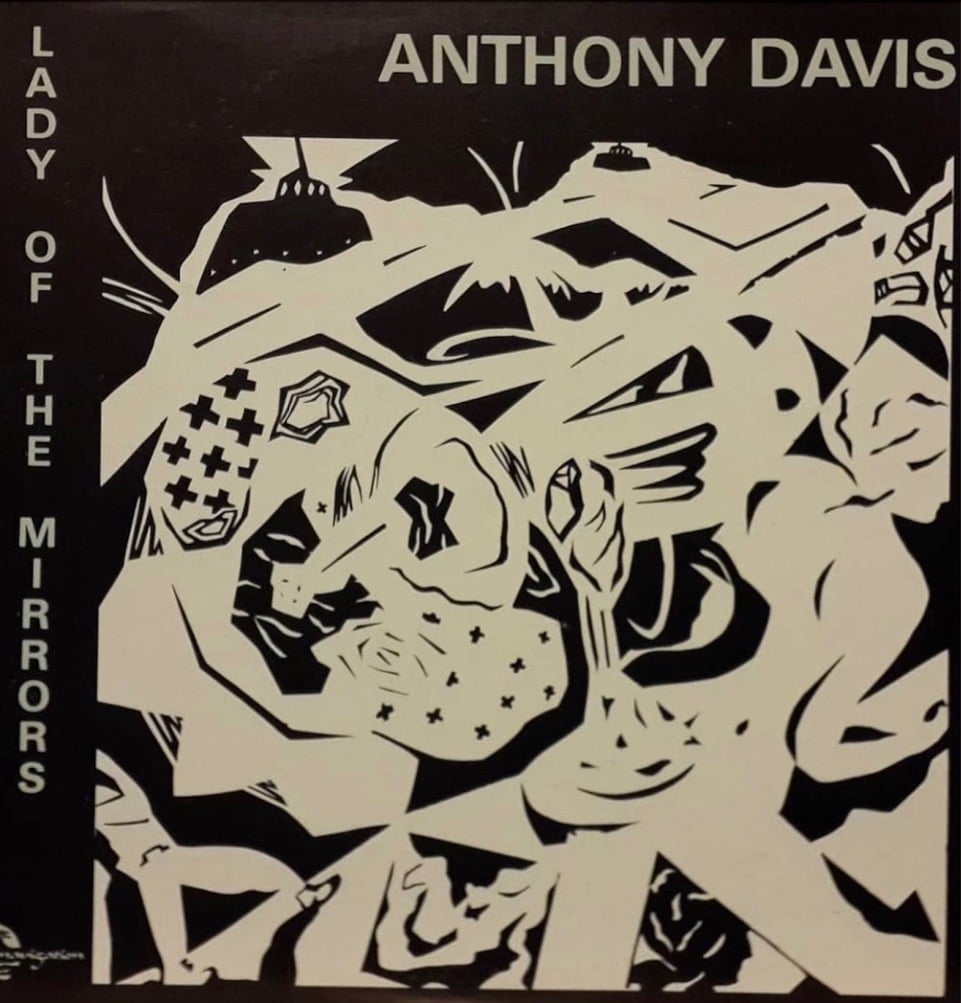
Dennis Kardon’s cover for Anthony Davis’s album Lady of the Mirrors. Courtesy: Dennis Kardon
Looking back, Kardon can’t help but marvel at the fairytale-like chain of events.
There was a time when he worried about saddling his wife and daughter with a studio full of artwork after he dies. He wanted to leave behind “something of value,” he said, “a record, not just of my existence but my views about the world. Making a painting that no one would throw in a Dumpster.”
Now, his first solo exhibition in Manhattan since 2008 will be accompanied by a new book, published by Massimo De Carlo and Lubov galleries. It will feature reproductions of his 183 works, an essay by David Rimanelli, and an interview between the artist and the trendsetting curator Allison Gingeras.
Kardon is especially excited about younger artists responding to his paintings.
“It’s like a new life,” he said.